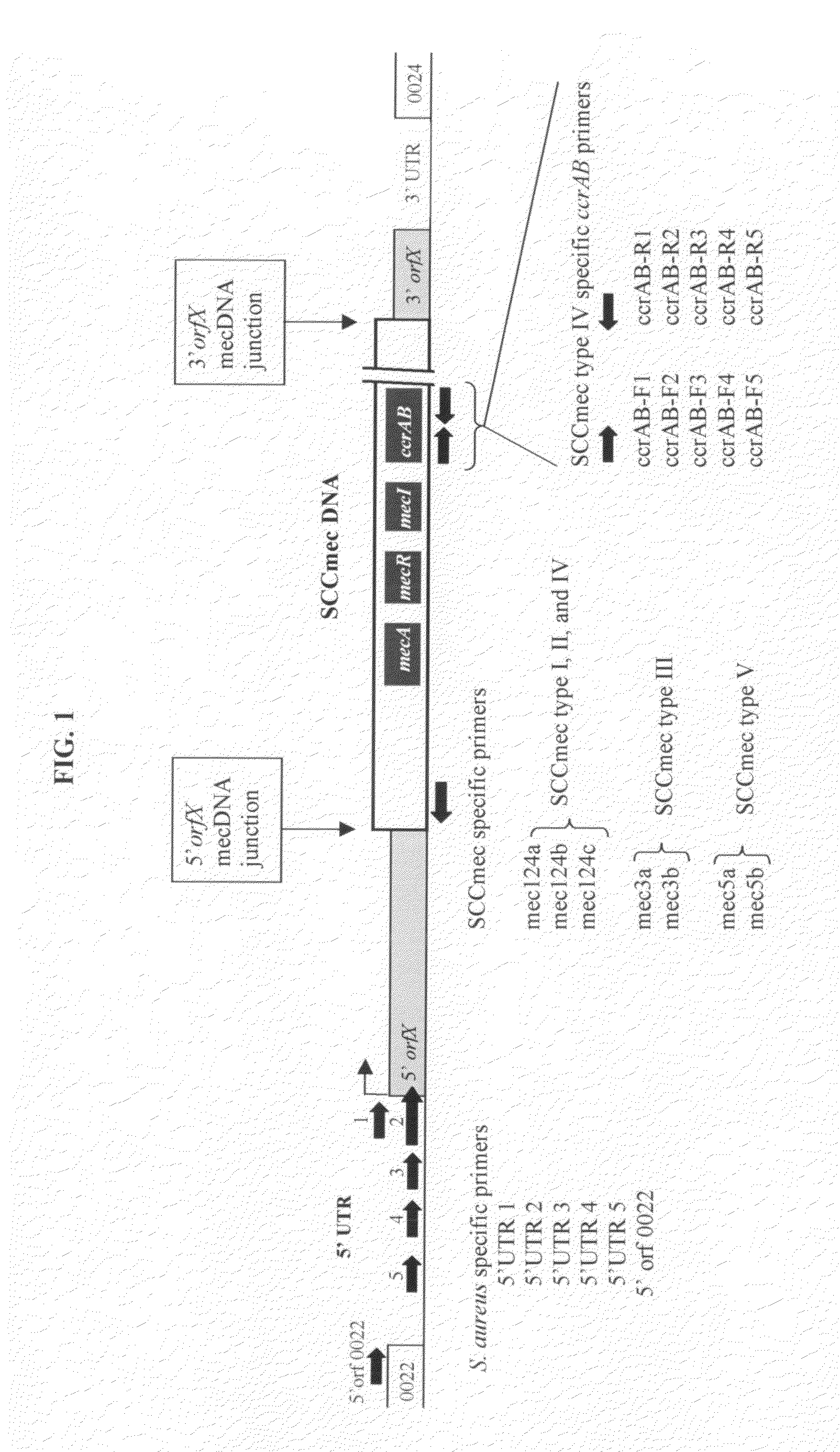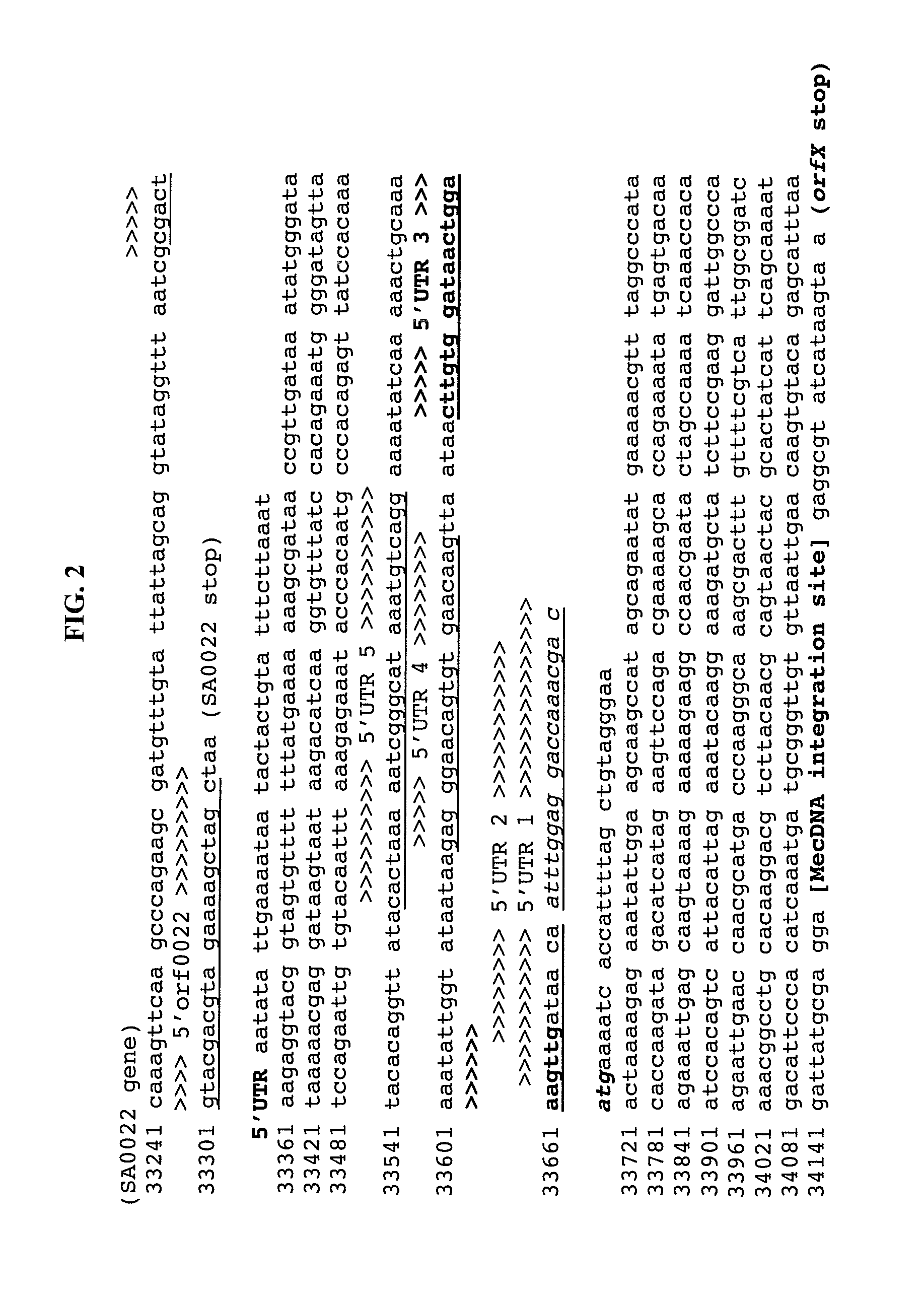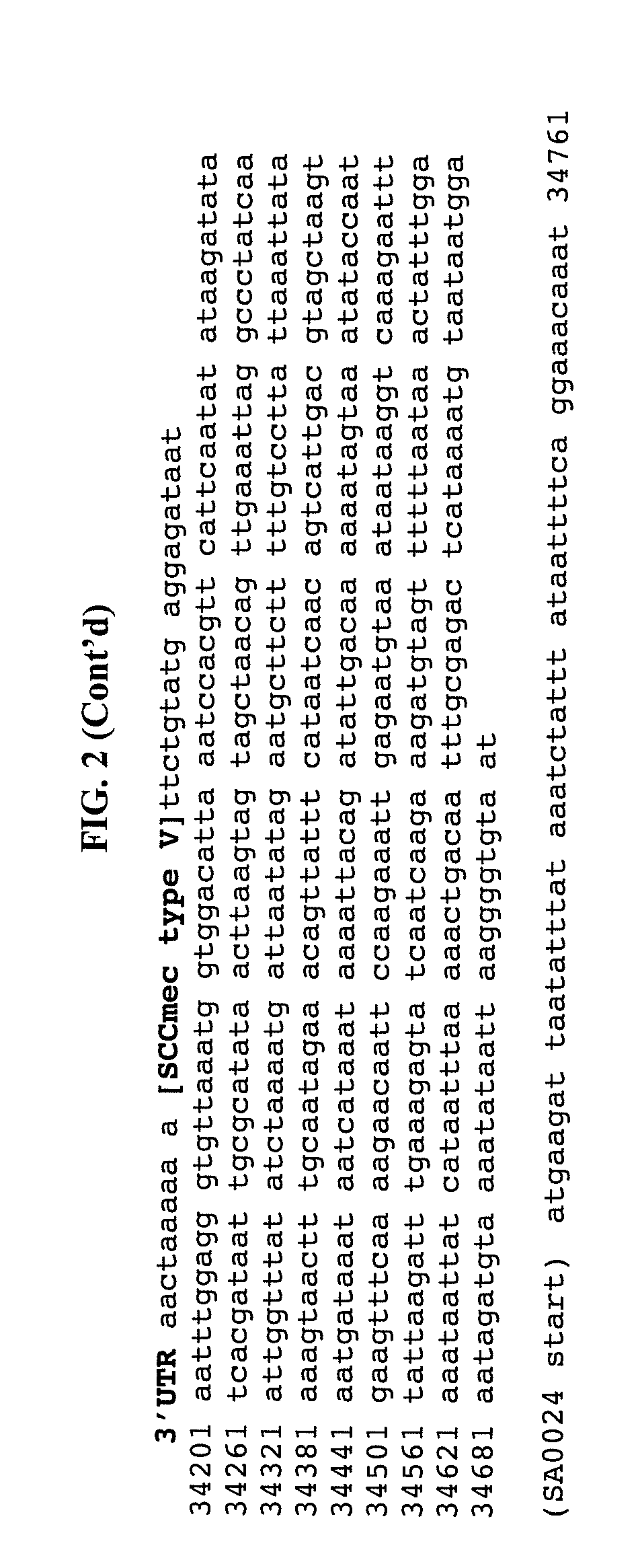Method of determining types I, II, III, IV or V or methicillin-resistant Staphylococcus aureus (MRSA) in a biological sample
a technology of methicillin-resistant staphylococcus aureus and biological sample, which is applied in the direction of antibacterial agents, peptide/protein ingredients, and library screening. it can solve the problems of unsatisfactory assays, ccrab gene and 5′ orfx mecdna junction assays, and the minimum time period of 24-48 hours. it is easy to detect and detect the type of staphylococcus aureus, and reduce the possibility of interferen
- Summary
- Abstract
- Description
- Claims
- Application Information
AI Technical Summary
Benefits of technology
Problems solved by technology
Method used
Image
Examples
example 1
Staphylococcus aureus Detection and MRSA Types I, II, III, IV or V
[0124]In this study, we sought to design a conventional PCR assay that would specifically detect Staphylococcus aureus and simultaneously determine the types of MRSA. To achieve this goal, we selected a gene region that is Staphylococcus aureus specific and another gene region that allows differentiation of the SCC types. To that end, we chose the 5′ untranslated region (5′UTR) of the orfX gene that could be specific for detection of Staphylococcus aureus (See, FIG. 1). We also chose the SCCmec specific region located at the left arm of the 5′ orf X-mecDNA junction (See, FIG. 1). Forward primers were designed at the 5′UTR and reverse primers at the left arm of the 5′ orfX-mecDNA junction. Our approach is unique and distinct from all prior art attempts. To the best of the present inventors' knowledge, there is no report suggesting the use of primer pairs in MRSA detection assay that offer simultaneous advantages of: (i...
example 2
[0139]A) Primer Pairs Used in Multiplex PCR Assay
[0140]Using the primer pairs (i.e., forward primers and reverse primers) designed in Example 1, we performed multiplex PCR reactions to detect MRSA and its typing. In these multiplex PCR reactions, three (3) primer pairs were used: (i) a first primer pair that included one of the 5′UTR forward primer and one of the reverse primer specific for SCCmec type I, II and IV; (ii) a second primer pair that included one of the 5′UTR forward primer and one of the reverse primer specific for SCCmec type III; and (iii) a third primer pair that included one of the 5′UTR forward primer and one of the reverse primer specific for SCCmec type V.
[0141](i) SCCmec DNA Types I, II and IV
[0142]When we performed the nucleotide sequence alignments of the most prevalent types of SCCmec DNA, types I, II, III, and IV. It was determined that the left arm 5′ end of the SCCmec DNA of types I, II, and IV were almost identical, except that there was a 102 bp deletio...
example 3
[0157]In this series of study, we examined in a multiplex PCR reaction using a new primer pair (i.e., forward primer was 5′ UTR3 (SEQ ID NO:3) and reverse primer was mec124b (SEQ ID NO:8). We used two (2) positive control strains (i.e., MRSA SCCmec type I and MRSA SCCmec type IV) in the PCR reaction.
[0158](i) 5′ UTR 3 (Forward Primer) and mec124a, b, and c (Reverse Primers): Differentiate SCCmec Type I and SCCmec Type IV
[0159]To our surprise and unexpectedly, while many forward primers near the 5′UTR region have failed (Table 3), the forward primer 5′UTR 3 (SEQ ID NO: 3) was able to correctly amplify the target sequence, specifically detecting MRSA SCC Type I, II, and IV when used in combination with reverse primer mec124a (SEQ ID NO:7), mec124b (SEQ ID NO:8), or mec124c (SEQ ID NO:9) (FIG. 12).
[0160]FIG. 12 summarizes the PCR reaction results. The forward primer 5′UTR 3 (SEQ ID NO: 3) and reverse primer mec124b (SEQ ID NO:8) was able to amplify the correct amplicon product from a M...
PUM
| Property | Measurement | Unit |
|---|---|---|
| time period | aaaaa | aaaaa |
| volumes | aaaaa | aaaaa |
| sizes | aaaaa | aaaaa |
Abstract
Description
Claims
Application Information
 Login to View More
Login to View More - R&D
- Intellectual Property
- Life Sciences
- Materials
- Tech Scout
- Unparalleled Data Quality
- Higher Quality Content
- 60% Fewer Hallucinations
Browse by: Latest US Patents, China's latest patents, Technical Efficacy Thesaurus, Application Domain, Technology Topic, Popular Technical Reports.
© 2025 PatSnap. All rights reserved.Legal|Privacy policy|Modern Slavery Act Transparency Statement|Sitemap|About US| Contact US: help@patsnap.com



